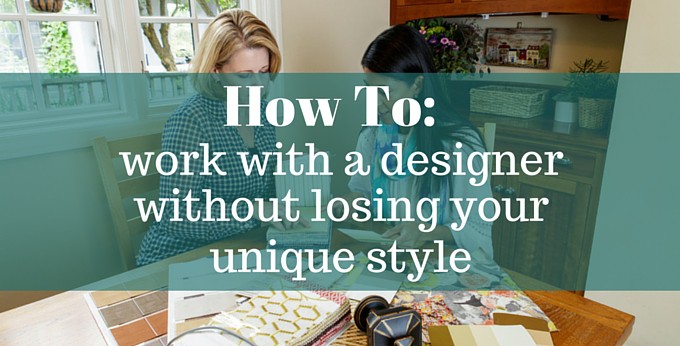
We all could use a little design advice now and then; but for some decorating projects, like choosing new window treatments or overhauling your design scheme, it’s best to rely on the assistance of a professional. Especially if you lack the time and expertise to manage the project on your own.
If you’ve never worked with a designer before, then make sure to follow these tips to ensure a positive experience. And always keep in mind that the finished project should enhance your home and be true to your style.
Educate yourself on design & the decorating process
Most of us don’t start researching design options until we are under-the-gun to make a decision. The further in advance you begin gathering inspiration, the more informed you will be when it comes time to make a decision.
Watching design shows, reading decorating magazines and browsing sites like Houzz and Pinterest are great ways to begin educating yourself on design, current trends and the decorating process in general. You’ll get a glimpse into what it’s like to work with a designer and start to become familiar with pricing.
Talk about things you like
Even though your designer is responsible for creating the decorating plan, it’s still important to provide them with a starting point. Otherwise you run the risk of going down a design path that isn’t true to your tastes.
Use Pinterest to create a mood board to show your designer before you begin the design process, that way your designer doesn’t waste your time and theirs, presenting ideas that don’t fit with your unique style. In addition to showing your designer what you like, make sure they know your dislikes too, such as certain colors, materials or decorating styles that are an unequivocal – no way.
Set guidelines for price
Nothing derails a project faster than lack of funding. That’s why it’s so important to set a realistic budget for your decorating project and communicate that figure to your designer from the very beginning. It’s also important to provide splurge vs. steal guidelines for the project, that way your designer knows to spend more money on the items that are most important to you.
Agree on a plan
Once you establish a budget and provide enough context for the project, your designer will suggest design options. Now this is one of the most important moments in the design process. The role of your designer is to ensure they deliver on your expectations, so make sure to provide constructive feedback, and if you don’t like something, provide a clear explanation. After some back and forth, you’ll agree on a plan that fits the objectives of your project.
Go along when shopping
If you have the time, then consider going shopping with your designer for project furnishings, materials and design elements. By tagging along, your designer will see instantly what items you’re attracted to and can help you hone your selection much quicker.
For the times you really need to see something in your home before you buy, consider taking advantage of in-home design consultations. If you’re shopping for new window treatments, Decorview will bring the showroom to you, that way you can explore color, fabric and product samples in the home.



